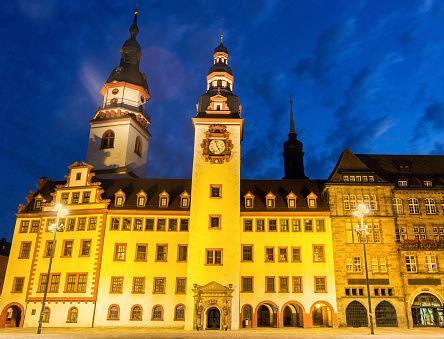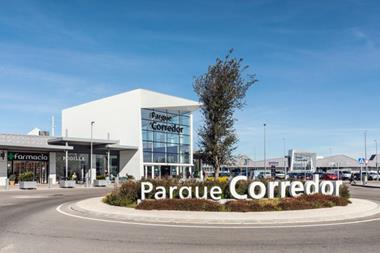One of the key complaints of real estate investors in recent months has been that it is becoming increasingly difficult to find good quality properties at a decent price in the leading capital cities across Europe.

But two reports published this week shine the light on medium-sized towns and cities in France and Germany, and suggest significantly more attractive yields are to be found beyond the well-trodden paths.
For example, French regional cities are enjoying robust growth compared with some of their larger European neighbours, according to new research from BNP Paribas Real Estate. In fact, Lyon, Lille, Nantes and Bordeaux are outperforming a number of European cities, with the French regional office market as a whole experiencing 24% growth in the last 12 months.
'Office vacancy rates in the French regions are expected to be relatively low in the short to medium term, compared to most other cities across Europe,' said Guillaume Delattre, vice president of BNP Paribas Real Estate France. 'The level of returns expected in the French regions are fairly respectable compared to the European benchmark. As such, the risk/return profiles of the main French cities will be comparable to several of the larger German markets such as Berlin, Munich, Cologne or Hamburg,' he explained.
Indeed, Delattre suggested that in terms of size, Lyon is comparable to Barcelona or Cologne, while Lille is comparable to Dublin or Rome. Most European markets have seen increases in take-up over the last 12 months, but they are not necessarily growing at the same pace. By contrast, French regional cities are seeing take-up levels rise 20% above the average of the last eight years and back to pre-crisis levels, he said. 'Only the markets of Central London, Frankfurt, Vienna, Manchester and Essen came in below this average.'
East German towns enjoy a comeback
On the residential front, medium-sized towns and cities in Eastern Germany are also enjoying a comeback, according to a report published this week by listed German property company TAG Immobilien. Rental and property prices in many local markets are increasing while yields have remained extremely attractive. At the same time population and household numbers are on the rise and labour markets and purchasing power are growing in the region’s large and medium-sized towns.
'In Saxony's Chemnitz (pictured), for example, household purchasing power has surged by almost 15% over the last five years. In combination with vacancy rate declines and rental prices that remain at an affordable level, such developments promise investment yields of over 9%, peaking at up to 12.5%,’ said Claudia Hoyer, chief operating officer at TAG Immobilien. 'B locations that boast universities or technical colleges have an extra degree of attractiveness,' she added.
This compares to yields as low as 3% for Munich, Berlin and Hamburg with Cologne, Dusseldorf, Frankfurt and Stuttgart just slightly higher at 3.5%.
The report cites numerous other examples of medium-sized towns like Freiberg, Jena and Weimar which have low vacancy rates and are witnessing prices rising by as much as 40% due to increased demand for housing. It is not only B cities that are experiencing unprecedented demand; the same applies to smaller towns in the regions around major cities, especially those that boast convenient rail and bus links to their larger neighbours, the report claims.
For example, the extremely positive economic and population growth in Berlin has increased the pressure on an already overheated and over-priced housing market. And what is true for Berlin is true of the other major cities in Eastern Germany that have experienced strong growth over the past five years – in particular Dresden and Leipzig. As a 'magnet town' in close proximity to Dresden, Freiberg is now attracting many more residents than it was able to do just five years ago.
Europe's medium-sized cities are just right
The attractions of Europe’s medium-sized cities were also widely expounded during a string of panel discussions at the recent Expo Real fair held in Munich earlier this month. At a planning and partnerships’ forum, the PropertyEU editorial team discovered a number of hidden gems from Glasgow in the UK to Gothenburg in the Nordics and Szczecin in Poland.
'As a post-industrial city, Glasgow had some typical challenges to overcome,' said Richard Brown, executive director of Glasgow City Council. ‘Now multiple local authorities are combining to attract investment and we’re putting significant funds into improving infrastructure.'
Gothenburg stands out in Europe for its incredible growth dynamics, the city’s head of establishment and investment Henrik Einarksson said. ‘In the past 15 years, real wages have gone up 61% and productivity has gone up 34%. We’ve seen 150,000 new residents in that time and created another 100,000 new jobs. That’s unique in Europe.'
Alessandro Buwelski, director of investor and business for Szczecin's municipal government encouraged investors to look again at the western Polish city. 'The problem with Szczecin is that no one knows where it is, let alone how to spell it. We’re actually 12 km from the German border, 127 km to Berlin, and our recent investment in roads has made it powerfully connected.'
In PropertyEU's own backyard, the four big Dutch cities have joined forces to attract investment under the banner of Holland Metropole. Indeed, this year the PropertyEU partnered with this regional initiative in a stand at the Munich fair. Amsterdam is of course well known, but the city is small and its residential stock - both to let and to buy - is very restricted. That said, the Dutch capital is extremely well connected to the nearby cities of Utrecht, Rotterdam and The Hague where supply is more readily available and less expensive.
No doubt Europe's leading capital cities will continue to grab the headlines when it comes to big-ticket transactions, but this is also where the competition is most intense. Market watchers agree that yields continue in Paris and the Big 7 cities in Germany will continue to head further south for the foreseeable future. In other words, those investors who are willing to venture into some of Europe’s medium-sized cities may find it well worth their while.
Judi Seebus
Editor in Chief










